Camping through Denmark
In this post I'll share my camping experience through denmark.
TRAVELING
Hey, my dear camping friends,
in this post, I’d like to give you a little glimpse into my camping trip to Denmark. Beautiful nature, Copenhagen, and a bit of history – these are the impressions I want to share with you.
It all started on a Tuesday morning. My buddy and I packed our gear and headed up north into the chilly winds. Here’s what you definitely shouldn’t forget on your packing list for a camping trip in March:
Must-haves:
(Air) mattress
Blankets & pillows
Campingaz gas burner & gas canisters
Cooking utensils (pan, bowl, cutlery)
Firewood, methylated spirits, firelighters & a lighter
Toiletries & warm clothes
Tent
Sleeping bag (preferably rated to -10 °C – worked great for me!)
Optional gear:
Sunshade / tarp
Tent poles / telescopic poles
Swimwear, towel
First off, let’s talk about the sleeping bag.
March is still a cold month – you might get a glimpse of springtime temperatures during the day, but at night it often drops below zero. That’s why it’s important to have a sleeping bag rated down to -10 °C. You can find a 4-season bag like that on Amazon starting at €39.99. I personally own one and didn’t have a single cold night during our 5-day trip – unlike my buddy, who brought two summer sleeping bags and still couldn’t quite escape the cold, even with thick layers.
But hey, he made it through the trip nonetheless.
So, if you’ve got an old sleeping bag lying around, make sure to check what temperature range it’s actually rated for.
Thermal underwear is also super important this time of year. It helps trap your body heat and can prevent hypothermia.
Blankets and pillows, along with warm clothes, are not only great for cozy evenings – their main purpose is to stuff your sleeping bag with them during the day.
Why? Simple: by stuffing it, you force the cold air out and prevent more from getting in. The result is that you’ll crawl into a slightly warmer bag, which helps retain body heat more efficiently and heats up faster.
Lastly, I want to share a real game-changer: the manual air blower crank.
If you’ve ever tried to start a fire in the wild, you know how tricky it can be. This little tool really saved us. Thanks to the boosted airflow from the hand crank, the embers and kindling caught fire much faster and with less effort.
But now, let’s get to the real topic: the trip to Denmark.
On our first day, we could already see Denmark on the horizon – but we stayed in Germany a little longer, because there was one more stop we wanted to make: the Viking village of Haithabu.
It’s relatively well-known – not only for its influential history, but also because of the Viking mead you can find in the assortment of some large retailers like Kaufland.
After a 4-hour drive, we made a stop at the village and bought a ticket for the museum. It cost €11 for adults and €9 for students per person. The museum is located about 3 kilometers from the actual Viking village.
It consists of five large rooms packed with exhibitions about Viking life – from the construction of their ships, to children's toys, to detailed displays of traditional professions like blacksmithing. There was a lot to read, and at the end of the exhibit, we were shown a short film about the history of Haithabu.
A little later, we set off for the Viking village itself (also known as Hedeby), which unfortunately only opens from April 4th onward – so we were met with locked gates. Still, even from a distance, the village looked seriously impressive. The old architectural style of the reconstructed houses gave us a glimpse into the past and the everyday life of the Vikings.
Even though there are only a few structures standing today, archaeological findings confirm that the village once covered an area of 26 hectares – that’s roughly 36 football fields.
Here are a few quick facts about the village itself:
It was founded around 770 AD and was part of the Danish Kingdom. The village served as an important Viking trading hub, with trade routes stretching from Russia to Arabia to England. Goods traded included amber, weapons, metals, textiles, and glass beads.
But this flourishing little settlement wasn’t meant to last forever – wars between the Danish Vikings and the Slavs broke out repeatedly until the village was completely destroyed in 1066.
After that, trade shifted to Schleswig, and the village was abandoned.
Over time, Haithabu faded into obscurity. The marshy ground slowly swallowed the buildings until no remains were visible. Yet old writings – like those of a traveler from Arabia – hinted that a Viking settlement must have existed at this very spot on the Schlei.
Even the Danish King Gorm mentioned Haithabu in his inscriptions.
800 years later, in 1897, the first excavations began – and they are still ongoing today.
As you can tell, the village has a long and fascinating history – far more detailed than I could capture here.
As the day slowly came to an end, we decided to pitch our camp at a beach in Glücksburg.
We enjoyed the sunset by a campfire and, later that night, sat around a fire bowl, philosophizing about life deep into the night.
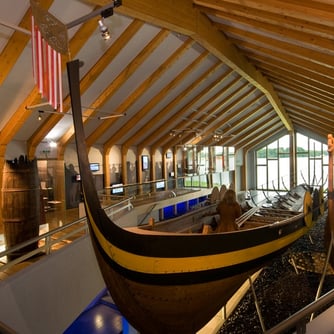
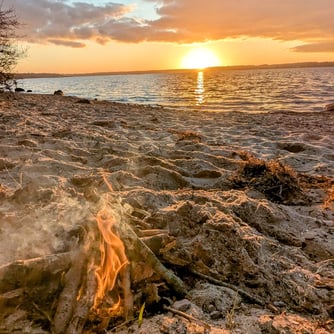
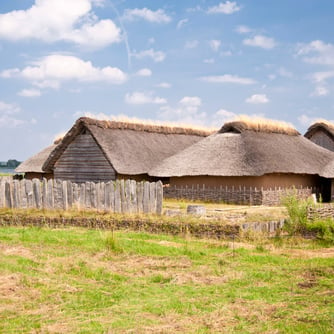
The next day began, and before we continued on through Flensburg into Denmark, we started with a cold plunge in the Baltic Sea. And let me tell you: it’s seriously freezing.
We built a small fire again to warm ourselves up afterward as the sun slowly rose.
While searching for firewood, I stumbled upon a strange stone embedded in a tree trunk in the forest – of course, I took it with me right away.
It looked like runes had been carved into the stone, though I can’t say for sure what they mean.
But take a look for yourself:
If you’re familiar with runes, I’d be super grateful if you have any theories or guesses about what it could mean. Either way, it now makes a great little decoration for my desk.
Once we were completely dry and warmed up, we hit the road again toward Denmark.
Pro tip: It’s definitely smart to stock up on groceries in Germany before crossing the border – because in Denmark, a lot of things cost twice as much.
Of course, we totally forgot about that, which made our trip a bit more expensive than it needed to be.
But no worries – we crossed the border and were finally in beautiful Denmark: plenty of nature, stress-free roads, and the more scenic part of the Baltic Sea!
We made a quick lunch stop at McDonald’s and then continued on to a hiking trail between Slagelse and Næstved.
If you’re into hiking, this one’s definitely worth checking out – the trail stretches 36 km and takes about 8 hours to walk through gorgeous nature. A perfect break from city life.
Along the 36 km trail, you’ll come across several so-called "shelterplads" – open wooden shelters where you can rest or set up camp. There are six locations in total.
We decided to spend the night at the “Hyllinge” shelterplads. To our surprise, there was a water pump nearby and even a little wooden outhouse.
There was also a large pile of dry firewood waiting for us next to the shelter, so we didn’t even have to go hunting for it in the woods.
Once we were settled in, we took a short walk through the surrounding nature and even spotted pheasants and wild hares … although one pheasant seemed to have taken it upon himself to accompany us all night long.
That evening, we cooked our dinner over the campfire, with occasional rustling sounds in the background – yep, it was the pheasant again.
But once the sun set, he presumably went off to sleep somewhere else.
For us, there was only one thing left to do that night: stargazing.
The sky was clearer than I’ve ever seen it before.
That’s mostly thanks to the low light pollution in the area – within a 10 km radius, there weren’t any major light sources to outshine the stars.
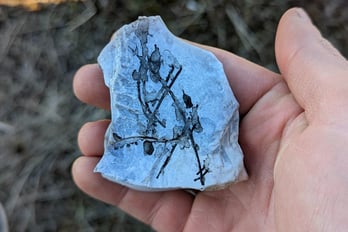

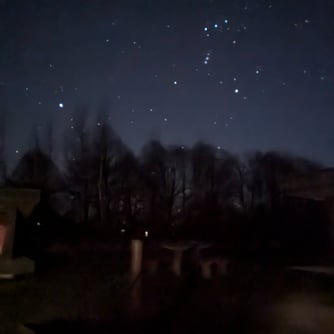

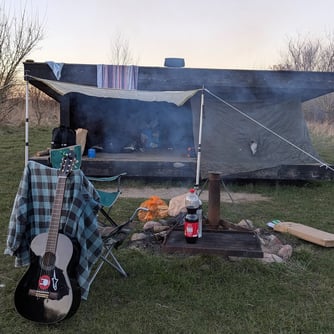
Here's how you get to the shelter ,,Hyllinge"
After another quiet night, we started our day with breakfast – once again joined by our newly acquired friend, who must’ve had a nest somewhere nearby.
A little while later, we packed up our things and headed toward Denmark’s capital: Copenhagen.
On the way there, we had to pay a one-time toll of €35, as there was no alternative connection to the mainland. The only way across was via a kilometer-long bridge.
Once we made it to the other side, we drove for another hour before finally arriving.
As with any capital city, the traffic was chaotic, so we quickly decided to park in a parking garage. From that point on, we were on foot and ready to explore the city.
Our first planned stop was the Little Mermaid – Copenhagen’s most iconic landmark.
Unfortunately, construction work forced us to take a detour, and we ended up at Amalienborg instead.
We arrived at a large octagonal square, surrounded by four palaces and featuring an equestrian statue of King Frederick V – the founder of this district – at its center.
The palaces are patrolled by the Royal Guard, much like the ones in England. One of the palaces is open to the public, while the others serve as residences for the royal family.
As you might spot in the background of the photo, there’s another nearby attraction: the Frederik’s Church (Frederiks Kirke).
On Saturdays, you can go up to the dome starting at 1 p.m. for a panoramic view of the city – but sadly, we were there on a Thursday, so we missed out on that.
With the first two landmarks crossed off our list, we decided to hop on one of the harbor water taxis that travel through the different parts of Copenhagen – a great alternative to a traditional sightseeing tour, especially if you don’t need a guide.
Unfortunately, we realized too late that the boat was headed in the opposite direction from the Little Mermaid.
So, in true German fashion, we walked all the way back on foot – but honestly, that allowed us to see even more of Copenhagen … including Angela Merkel, believe it or not.
If you really want to see everything, I’d recommend at least three days in Copenhagen.
The underground parking fee came out to about €40 for five hours.
It was getting late, and we were exhausted, so we made our way to the next shelterplads.
This time, we ended up at Feddet Nord – probably the most beautiful camping spot I’ve ever seen.
Getting there by car was a bit tricky, so we had to park further away. But it was totally worth it.
From the cabin, we had a direct view of the sea, and the beach was less than 20 meters away, giving us both a perfect swimming spot and plenty of wood for a fire.
We fired up the grill, made some dinner, and then crawled into our sleeping bags – both completely wiped out from the day’s adventure.
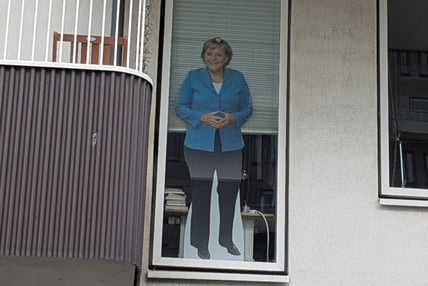

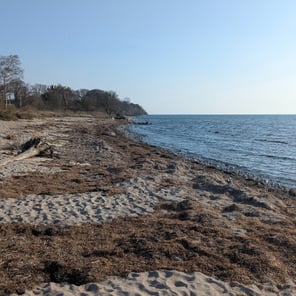
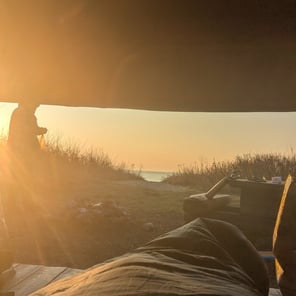
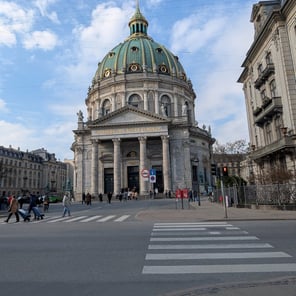
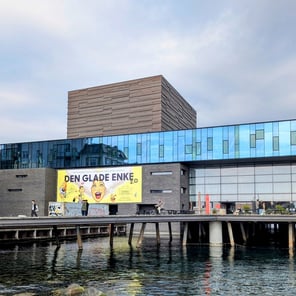
Here's how you get to the shelter ,,Feddet Nord"
In the morning, we went for another round of ice bathing and then took a proper shower afterward.
For this, I had brought a 20-liter solar shower bag, which can be hung from a tree branch.
The water heats up in the sun, making it a bit warmer than the Baltic Sea this time of year – pretty handy for anyone who doesn't want to bathe in cold seawater.
We packed our stuff, started the car, and continued toward Gedser – the final stop of our journey.
On the way, we took a break at a small beach, as there was another shelterplads located right next to it.
As you’ve probably noticed by now, I’ve become a big fan of these little log shelters – I’ve really come to appreciate them.
With a bit of gear, you can set up your own cozy camp, complete with a sunshade, tarp, and telescopic poles.
However, since this spot was located quite close to residential houses, we decided not to spend the night there.
Instead, we sat down by the beach and enjoyed the sunshine, while I strummed a bit on my guitar and read my book.
It’s truly amazing how much inner peace you can find just by being in nature.
A bit later, we continued on to Gedser, since that’s also where the ferry back to Rostock departs.
We spent our last night near the harbor – at another shelterplads.
This one seems to be quite popular during high season, as each of the four wooden huts had a QR code you could scan to reserve a night for a small fee of €6/night.
The site itself was equipped with showers, a toilet with a sink, and several fire pits.
If you only want to camp in a tent, a pitch will cost you just €4/night.
The nearby coastline is great for swimming or hiking, making this an ideal spot for a weekend camping getaway in Denmark.
We set up camp one last time, drank rye whiskey and honey mead, and watched the red sun slowly disappear on the horizon.
Later, we built a big campfire – accompanied by a few tunes on my guitar and some reflective conversations about our trip.
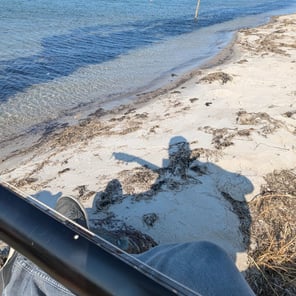
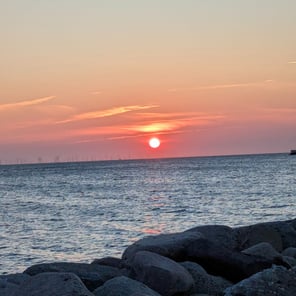
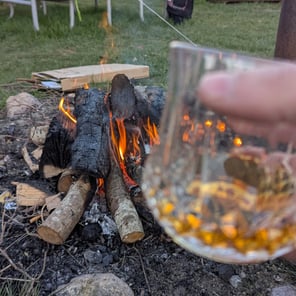
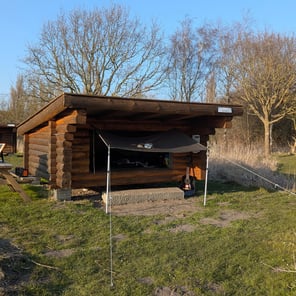
Here's how you get to the nature center of Gedser:
It was a short, yet beautiful adventure.
What I took away from it is how wonderful it can be to fully embrace the silence of nature and just be present in the here and now.
Too often, we forget to appreciate these exact moments – whether it’s because of everyday life or thoughts about the past and future.
All of that has its place, of course, but now I value even more the importance of truly enjoying the small moments in life.

